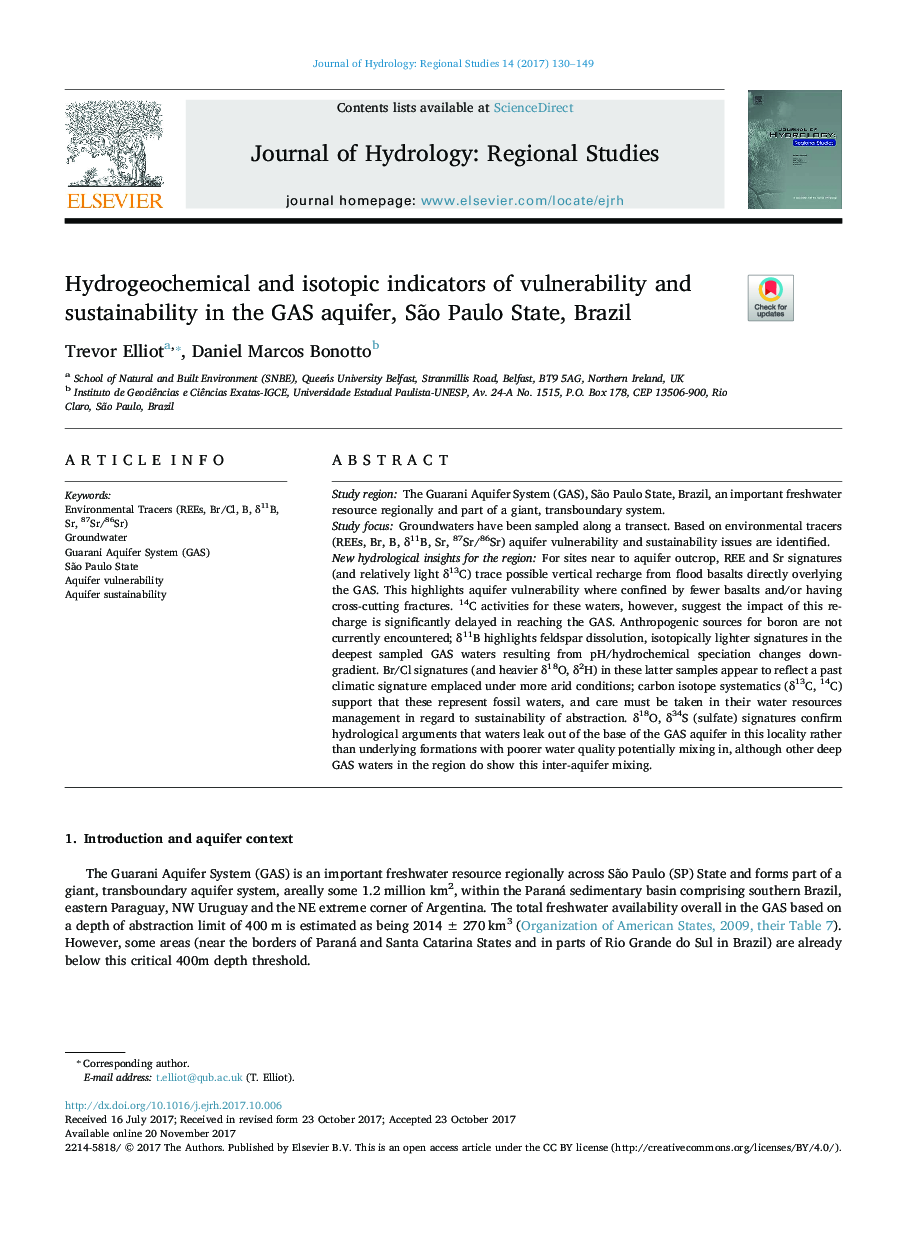| Article ID | Journal | Published Year | Pages | File Type |
|---|---|---|---|---|
| 8862908 | Journal of Hydrology: Regional Studies | 2017 | 20 Pages |
Abstract
For sites near to aquifer outcrop, REE and Sr signatures (and relatively light δ13C) trace possible vertical recharge from flood basalts directly overlying the GAS. This highlights aquifer vulnerability where confined by fewer basalts and/or having cross-cutting fractures. 14C activities for these waters, however, suggest the impact of this recharge is significantly delayed in reaching the GAS. Anthropogenic sources for boron are not currently encountered; δ11B highlights feldspar dissolution, isotopically lighter signatures in the deepest sampled GAS waters resulting from pH/hydrochemical speciation changes downgradient. Br/Cl signatures (and heavier δ18O, δ2H) in these latter samples appear to reflect a past climatic signature emplaced under more arid conditions; carbon isotope systematics (δ13C, 14C) support that these represent fossil waters, and care must be taken in their water resources management in regard to sustainability of abstraction. δ18O, δ34S (sulfate) signatures confirm hydrological arguments that waters leak out of the base of the GAS aquifer in this locality rather than underlying formations with poorer water quality potentially mixing in, although other deep GAS waters in the region do show this inter-aquifer mixing.
Related Topics
Physical Sciences and Engineering
Earth and Planetary Sciences
Earth-Surface Processes
Authors
Trevor Elliot, Daniel Marcos Bonotto,
